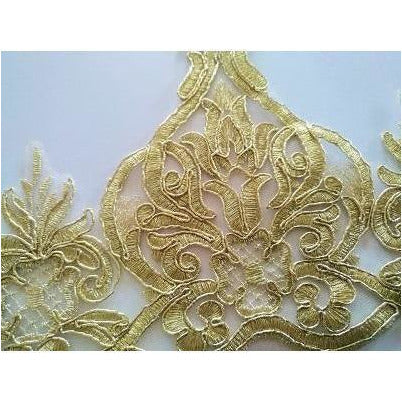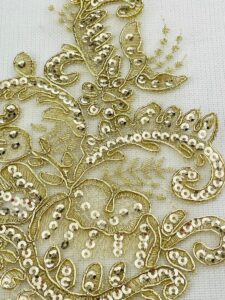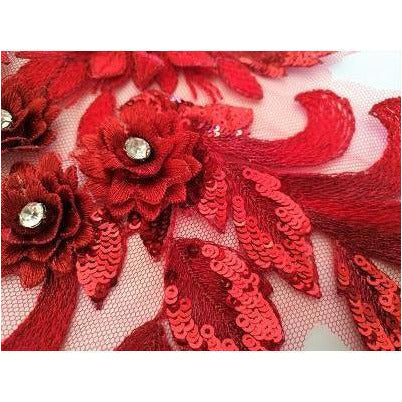The ancient sewing technique of applique involves cutting fabrics into various shapes and stitching designs of differing sizes onto a larger base fabric to create various motifs. Both hand embroidery and machine embroidery are used in this craft.
Designing Appliques
Applique is a type of embroidery that includes a wide array of designs and can be created using a variety of techniques, depending on your preferences. The following are examples of applique embroidery designs that can be done by hand or sewing machine:
- Smooth edge applique
- Raw edge applique
- Reverse applique
- Decorative applique
Smooth Edge Applique
With the help of a sewing machine, the raw edges of the background fabric being applied can be stitched around the shape in an effort to tidy it up with a selected stitch; providing the user with a tidy finish that is smooth and neat. This can be achieved using a zigzag stitch.
Raw Edge Applique
This design works well for projects that won’t be used regularly because the raw edges won’t be covered with fabric to create a seamless edge. Instead, they’ll be fastened to the background of the fabric. It is left with its current fraying edges. This style is perfect for smaller items like greeting cards or wall-mounted artwork.
When sewing cushions and garments stronger, longer-lasting stitches are used. This design is flexible and can be altered depending on its intended usage. To give the clothing a different appeal you can use black lace trim and achieve a totally classy look.
Multi-needle Hoop Applique
This stitching technique requires greater expertise and is seldom applied. It is a machine stitching technique that calls for the use of both an embroidery hoop, a gold lace trim, and a multi-needle sewing machine. The machine may be set up to use various colors and threads. Each element of your design will be stitched precisely to produce lovely designs.
It works best for quilting crafts. This appliqué design may be more appropriate for individuals with greater experience with embroidery.

Reverse Applique
As the name indicates, this embroidery technique involves layering fabrics on top of which a pattern needs to be sewed; rather than sewing fabric shapes into the backdrop fabric. Cut away portions of the fabric to reveal the Floral reverse applique’s shape and color.
Decorative Applique
While there are many appliqué options and variations available, this technique is among the best that have been tried and tested. It is the ideal option for people who enjoy experimenting with color and different fabric types. You can buy applique embroidery designs that are ideal for use in your embroidery endeavors, to create something uncommon and eye-catching.

There are 2 main ways to apply appliqué designs:
- machine applique,
- hand applique
Machine Embroidery Applique has entered the market as a result of technological advancements. And due to an increase in demand as the market has fully breezed in the Fashion industry.
Applique machine embroidery is quick and simple, but it always guarantees that the applique designs are accurate and flawless. The number of stitches in an applique design is substantially reduced when the fabric is used as the backdrop rather than a stitched fill. Allowing you, to create a larger design with fewer stitches.
At the same time, the stitch is the most crucial component of appliqué since it affects how long your design will survive. It’s good to glue or fuse your applique pieces to a background cloth, but gluing by itself will ultimately wear out, causing your gorgeous design to disintegrate.
Summing Up
In sum when completing an applique machine embroidery, one crucial factor to think about is the color of the embroidery thread. Use a bold decorative stitch when you don’t want to worry about aligning the edges with needles. The star stitch and the rick-rack stitch are two examples of decorative stitches. Use contrasting thread with the applique design and background fabric if the stitching will serve as the quilt’s primary design element. The majority of clothing printing technologies can use design files and print from them. The exception is embroidery, where appliqué embroidery designs are made up of stitches. The solution to bridge this gap is digitization.


